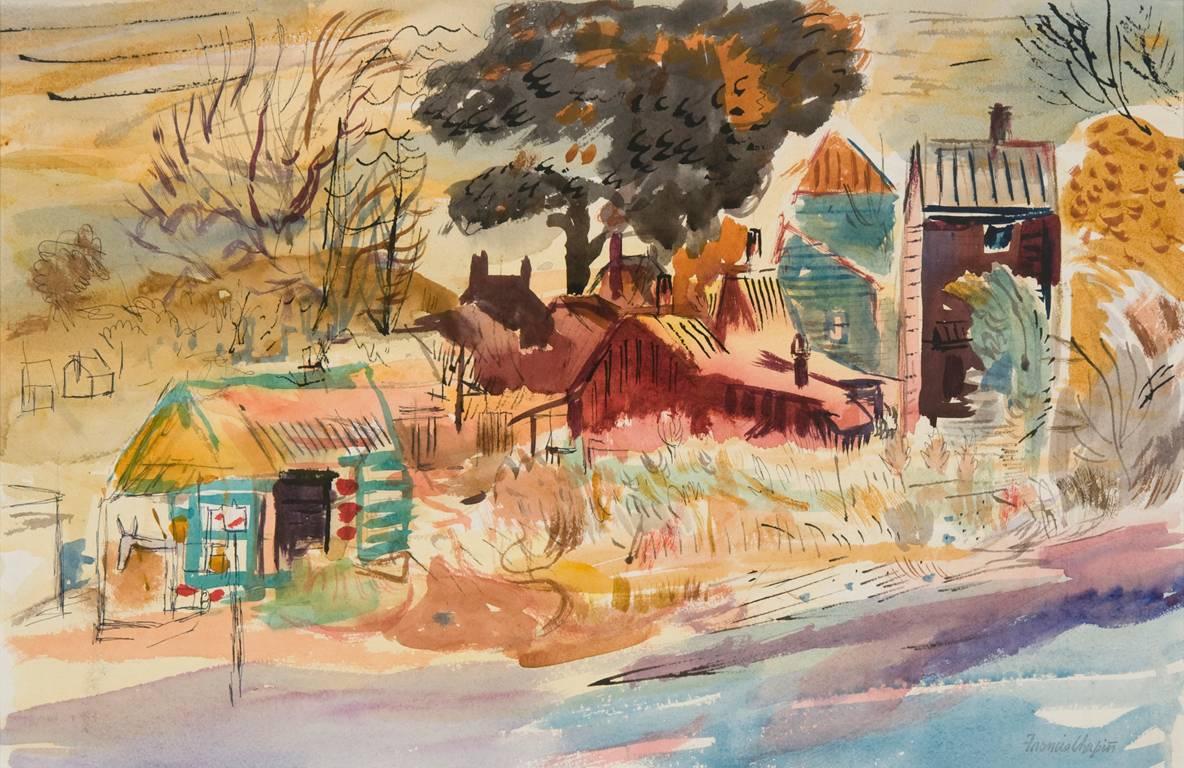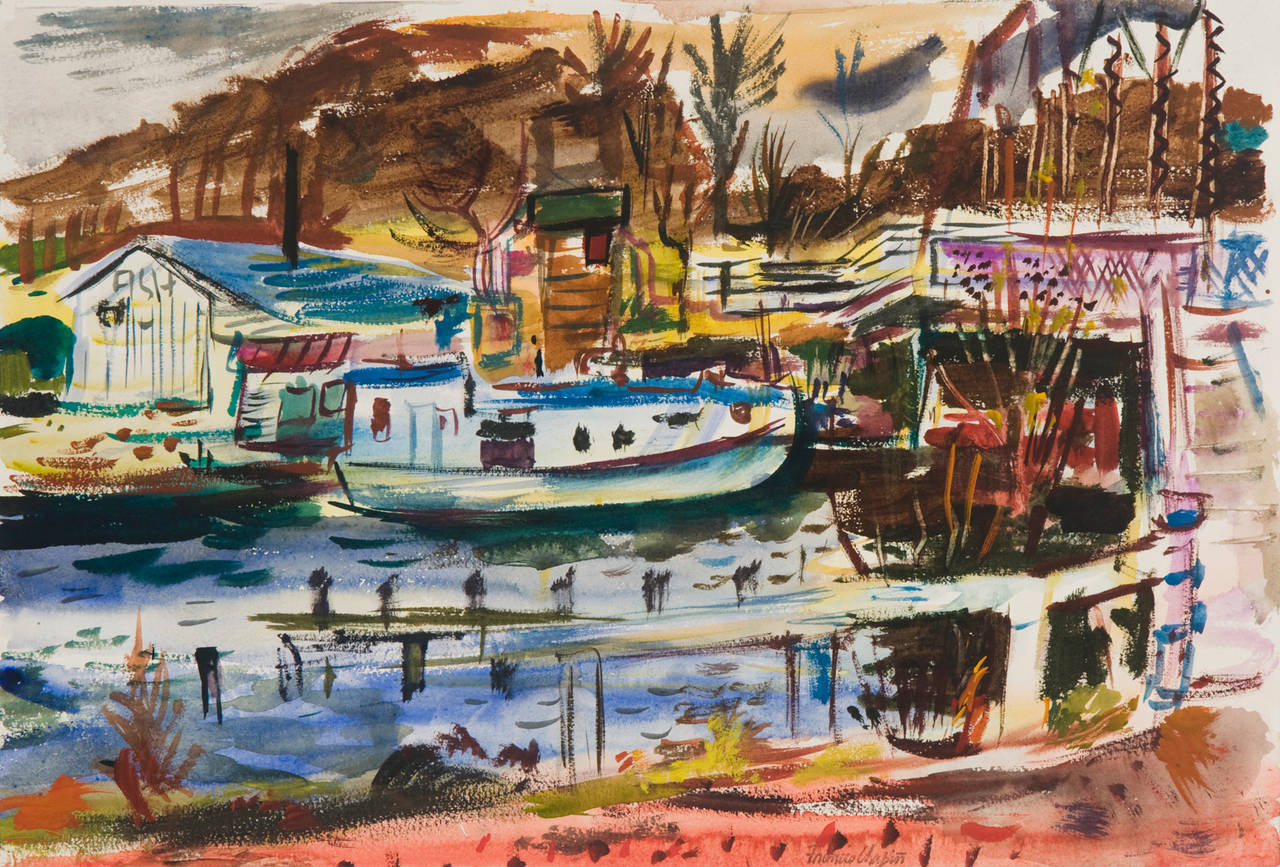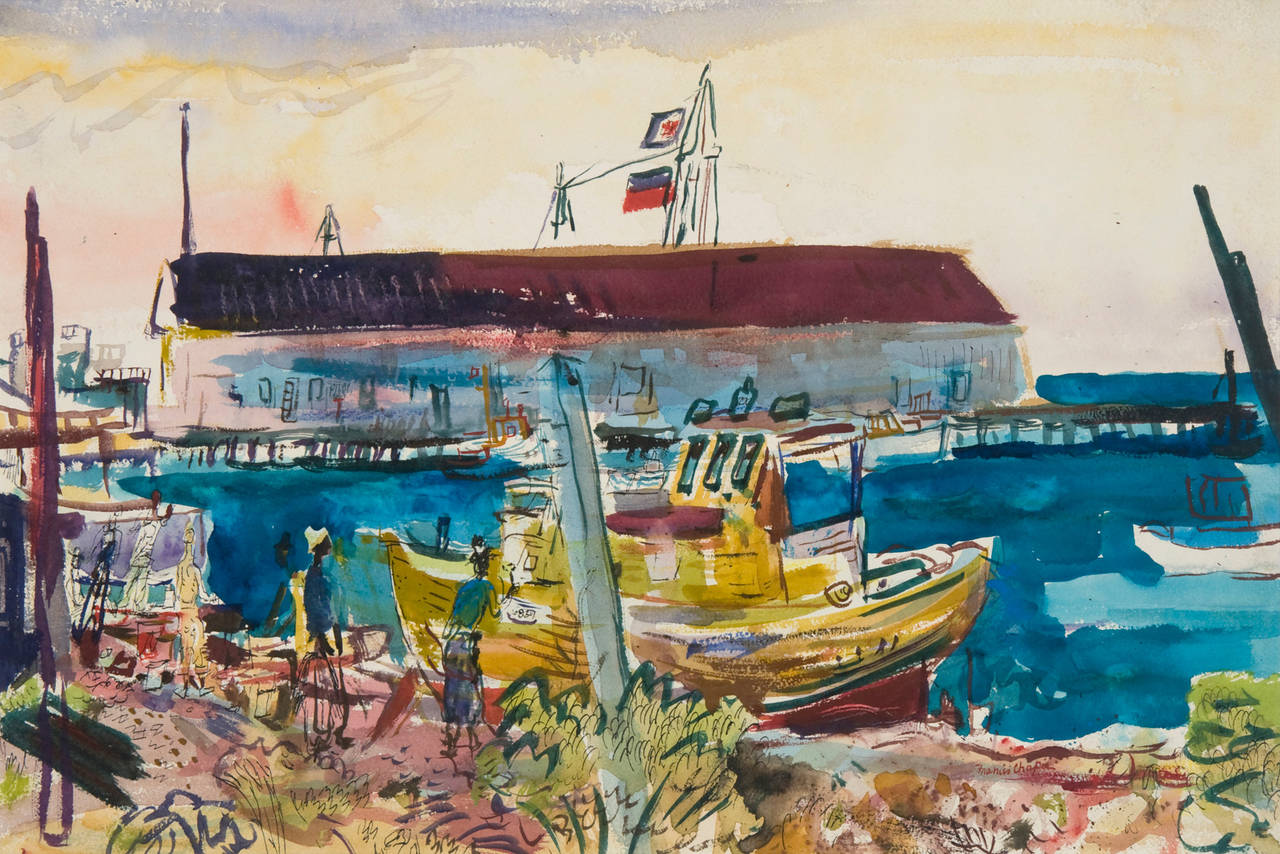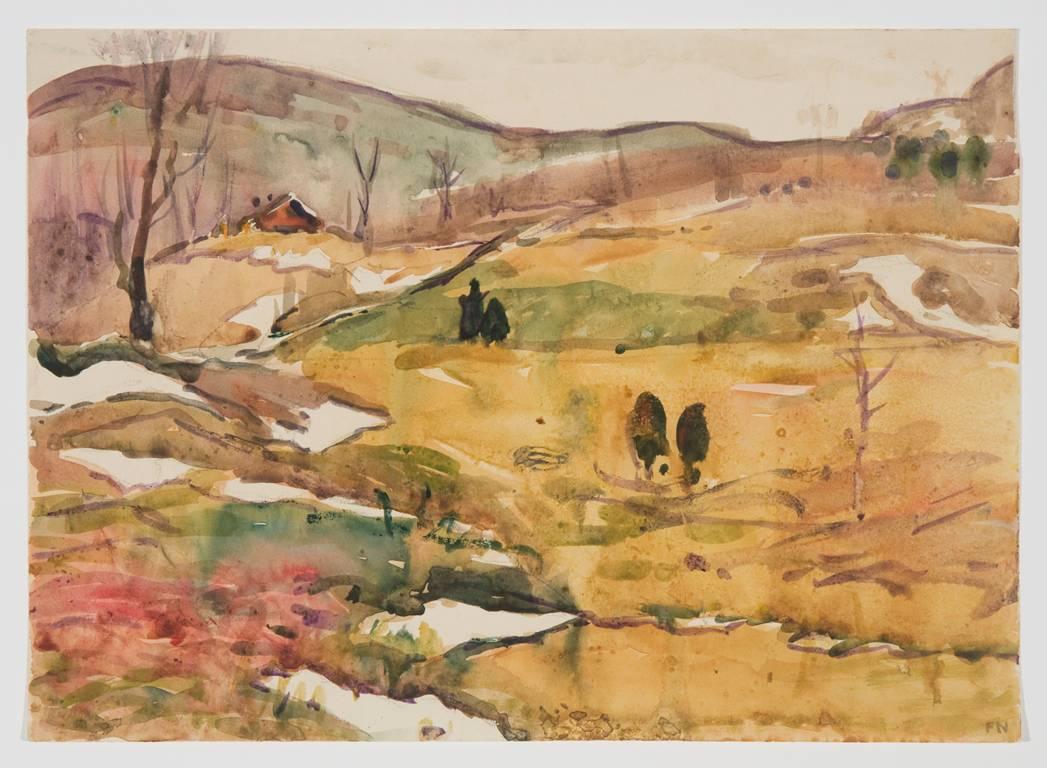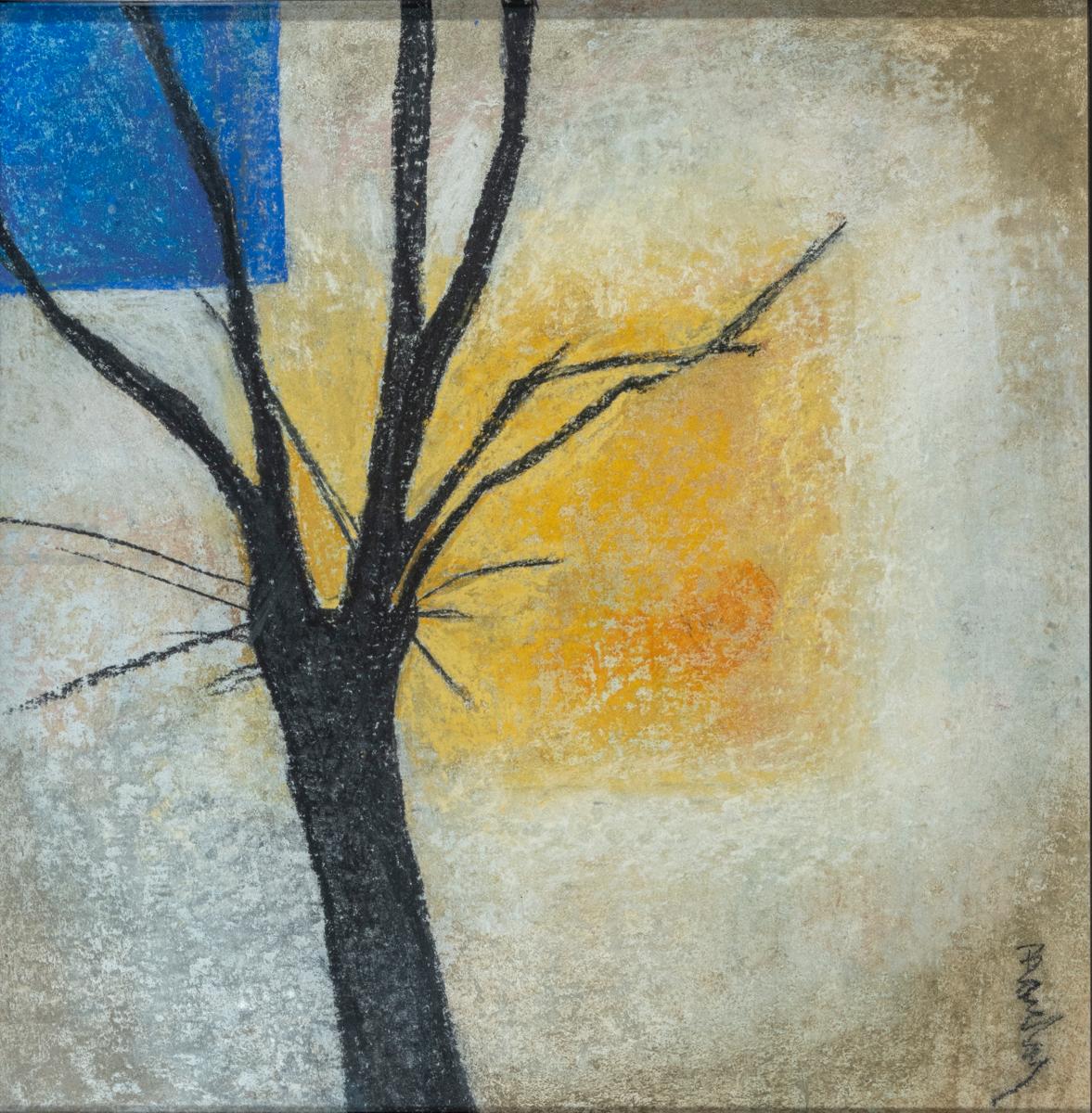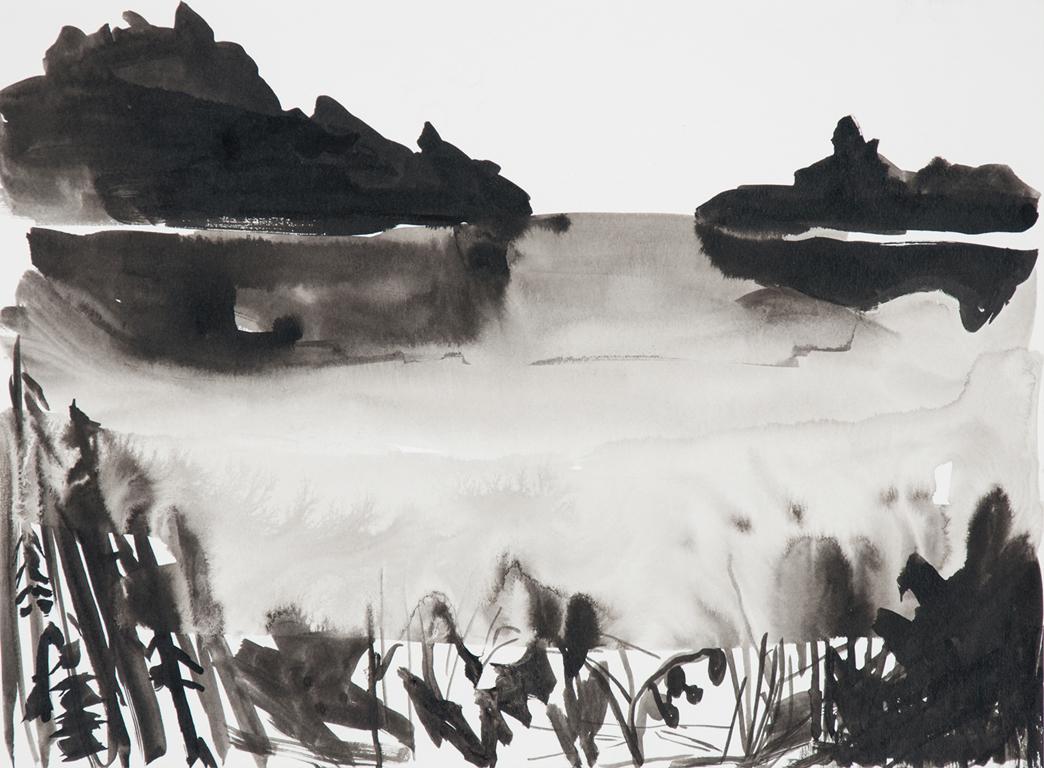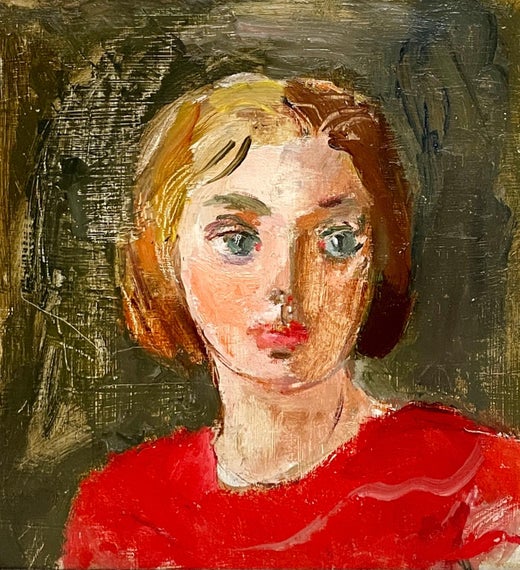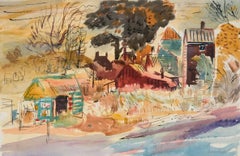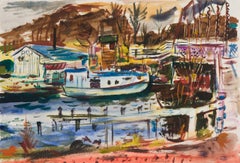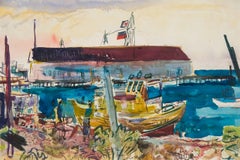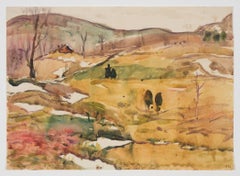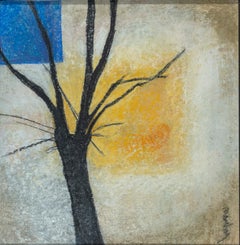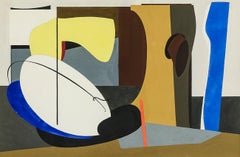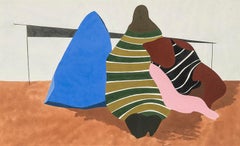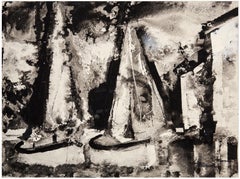Want more images or videos?
Request additional images or videos from the seller
1 of 5
Francis ChapinUntitledcirca 1930
circa 1930
$2,200
£1,633.38
€1,903.34
CA$3,054.31
A$3,416.44
CHF 1,777.93
MX$42,057.52
NOK 22,619.01
SEK 21,221.09
DKK 14,200.82
Shipping
Retrieving quote...The 1stDibs Promise:
Authenticity Guarantee,
Money-Back Guarantee,
24-Hour Cancellation
About the Item
Francis Chapin was one of the most celebrated painters in Chicago during his lifetime. When he was a young art student, Valley House founder, Donald Vogel, painted with "Chape" on the street corners in Chicago. In 1997, Valley House Gallery presented a solo exhibition of a group of watercolors selected from the artist's estate.
Francis Chapin had an active exhibition history with over 24 major museum and gallery exhibitions including two at the Art Institute of Chicago (1928 and 1952) and one at the Museum of Modern Art (1942). He participated in over 160 group exhibitions and won over 20 important awards and prizes. His work has been acquired by institutions including the Art Institute of Chicago, Brooklyn Museum, Library of Congress, Metropolitan Museum of Art, Pennsylvania Academy of the Fine Arts, and the Philadelphia Museum of Art.
Known primarily as a colorist, Chapin's exuberance, explosive brushwork and imposing 6'6" height masked a gentle, even-tempered man, loved and greatly admired by his students at the School of the Art Institute of Chicago where he taught for over 20 years. As a plein-air painter, Chapin recorded the essential elements of a location, with a strong, fauve-like iconography. He traveled extensively, always looking for subjects that demanded his attention.
- Creator:Francis Chapin (1899-1965, American)
- Creation Year:circa 1930
- Dimensions:Height: 12 in (30.48 cm)Width: 18 in (45.72 cm)
- Medium:
- Movement & Style:
- Period:
- Condition:
- Gallery Location:Dallas, TX
- Reference Number:Seller: 090191stDibs: LU257283962
Francis Chapin
Francis Chapin, affectionately called the “Dean of Chicago Painters” by his colleagues, was one of the city’s most popular and celebrated painters in his day. Born at the dawn of the 20th Century in Bristolville, Ohio, Chapin graduated from Washington & Jefferson College near Pittsburgh, Pennsylvania before enrolling at the Art Institute of Chicago in 1922. He would set down deep roots at the Art Institute of Chicago, exhibiting there over 31 times between 1926 and 1951. In 1927 Chapin won the prestigious Bryan Lathrop Fellowship from the Art Institute – a prize that funded the artist’s yearlong study trip to Europe. Upon his return to the United States, Chapin decided to remain in Chicago, noting the freedom Chicago artists have in developing independently of the pressure to conform to pre-existing molds (as was experienced by artists in New York, for example). Chapin became a popular instructor at the Art Institute, teaching there from 1929 to 1947 and at the Art Institute’s summer art school in Saugatuck, Michigan (now called Oxbow) between 1934 – 1938 (he was the director of the school from 1941-1945). A prolific painter, Chapin produced numerous works while traveling in Mexico, France, Spain, Saugatuck and Martha’s Vineyard, where he frequently spent summers and taught at the Old Sculpin Gallery there. Chapin was best recognized for his dynamic and vibrant images of Chicago during the 1930s and 40s. Chapin was a resident of the Old Town neighborhood where he lived and kept his studio on Menomonee Street for many years. Described as a “colorful figure, nearly 6 feet 6 inches tall, and thin, and usually wearing tweeds”, it is easy to imagine Chapin at work observing the busy street life of the city. In addition to his many exhibitions at the Art Institute of Chicago, Chapin’s work was shown during his lifetime at such institutions as the Pennsylvania Academy of Fine Arts, Philadelphia; the Corcoran Gallery, Washington, D.C.; the National Academy of Design, New York; the Museum of Modern Art, New York; the Whitney Museum of American Art, New York and the Carnegie Institute, Pittsburgh, among others. Francis Chapin’s paintings are represented in the collections the Art Institute of Chicago; the Friedman Collection, Chicago; the Butler Institute of American Art, Youngstown; the Denver Art Museum; the Everson Museum of Art, Syracuse; the Norton Museum of Art, West Palm Beach; the Telfair Museum of Art, Savannah and the Brooklyn Museum of Art, among others.
About the Seller
5.0
Recognized Seller
These prestigious sellers are industry leaders and represent the highest echelon for item quality and design.
Established in 1954
1stDibs seller since 2013
160 sales on 1stDibs
Typical response time: Several days
Associations
Art Dealers Association of America
- ShippingRetrieving quote...Shipping from: Dallas, TX
- Return Policy
Authenticity Guarantee
In the unlikely event there’s an issue with an item’s authenticity, contact us within 1 year for a full refund. DetailsMoney-Back Guarantee
If your item is not as described, is damaged in transit, or does not arrive, contact us within 7 days for a full refund. Details24-Hour Cancellation
You have a 24-hour grace period in which to reconsider your purchase, with no questions asked.Vetted Professional Sellers
Our world-class sellers must adhere to strict standards for service and quality, maintaining the integrity of our listings.Price-Match Guarantee
If you find that a seller listed the same item for a lower price elsewhere, we’ll match it.Trusted Global Delivery
Our best-in-class carrier network provides specialized shipping options worldwide, including custom delivery.More From This Seller
View AllUntitled
By Francis Chapin
Located in Dallas, TX
Francis Chapin was one of the most celebrated painters in Chicago during his lifetime. When he was a young art student, Valley House founder, Donald Vogel, painted with "Chape" on th...
Category
Mid-20th Century American Modern Landscape Drawings and Watercolors
Materials
Paper, Watercolor
Untitled
By Francis Chapin
Located in Dallas, TX
Francis Chapin was one of the most celebrated painters in Chicago during his lifetime. When he was a young art student, Valley House founder, Donald Vogel, painted with "Chape" on th...
Category
1930s American Modern Landscape Drawings and Watercolors
Materials
Paper, Watercolor
Untitled
By Francis Chapin
Located in Dallas, TX
Francis Chapin was one of the most celebrated painters in Chicago during his lifetime. When he was a young art student, Valley House founder, Donald Vogel, painted with "Chape" on th...
Category
1930s Modern Landscape Drawings and Watercolors
Materials
Paper, Watercolor
Untitled
By Fred Nagler
Located in Dallas, TX
Fred Nagler was born in 1891 in Springfield, Massachusetts, where he first studied wood carving. From 1914 to 1917, he studied at The Art Students League of New York, where his prof...
Category
20th Century American Modern Landscape Drawings and Watercolors
Materials
Graphite, Paper, Watercolor
Untitled
By Allison Gildersleeve
Located in Dallas, TX
"Behind my canvases, collages, and drawings lies a singular proposition: places are not inert; they are repositories for all that passes through them. My work is an inquiry into the ...
Category
2010s Contemporary Landscape Drawings and Watercolors
Materials
Paper, Ink, Acrylic
Untitled
By Edmund Daniel Kinzinger
Located in Dallas, TX
Edmund D. Kinzinger was born in 1888, in Pforzhein, Germany. In Munich he studied at the Kirr Schule and the Staatliche Akademie, and pursued graduate studies at the Academie Modern, Paris. Before serving in the German Army, Kinzinger was a master student of Adolph Holzel at the Staatcliche Akademie, Stuttgart; he returned to study under Henrich Waldschmidt after nearly five years of artillery service.
Several of Kinzinger’s fellow students in Germany, such as Johannes Itten, would go on to be associated with the Bauhaus school. Coming into contact with all manner of artistic influences in Europe after World War One, Kinzinger’s work may be viewed as a “synthesis” of modernist styles. The influences of Abstract Expressionist, Cubist, and Futurist styles in Kinzinger’s work at this time are symptomatic of his contact with the likes of Hans Hofmann, Pablo Picasso, and Alexander Archipenko.
About this period of Kinzinger's work, Philip Van Keuren...
Category
1930s Cubist Landscape Drawings and Watercolors
Materials
Crayon, Paper, Pencil
You May Also Like
Untitled
Located in Bournemouth, Dorset
Sally Barclay (1911-2000) was a New Jersey Artist known for her painting and activities as an art teacher.
Signed front and back.
Category
1950s American Modern Landscape Drawings and Watercolors
Materials
Crayon
$504 Sale Price
20% Off
Untitled
By Charles Houghton Howard
Located in New York, NY
Charles Houghton Howard was born in Montclair, New Jersey, the third of five children in a cultured and educated family with roots going back to the Massachusetts Bay colony. His father, John Galen Howard, was an architect who had trained at M.I.T. and the École des Beaux-Arts in Paris and apprenticed in Boston with Henry Hobson Richardson. In New York, the elder Howard worked for McKim, Mead and White before establishing a successful private practice. Mary Robertson Bradbury Howard, Charles’s mother, had studied art before her marriage. John Galen Howard moved his household to California in 1902 to assume the position of supervising architect of the new University of California campus at Berkeley and to serve as Professor of Architecture and the first Dean of the School of Architecture (established in 1903). The four Howard boys grew up to be artists and all married artists, leaving a combined family legacy of art making in the San Francisco Bay area that endures to this day, most notably in design, murals, and reliefs at the Coit Tower and in buildings on the Berkeley campus.
Charles Howard graduated from the University of California at Berkeley in 1921 as a journalism major and pursued graduate studies in English at Harvard and Columbia Universities before embarking on a two-year trip to Europe. Howard went to Europe as a would-be writer. But a near-religious experience, seeing a picture by Giorgione in a remote town outside of Venice, proved a life-altering epiphany. In his own words, “I cut the tour at once and hurried immediately back to Paris, to begin painting. I have been painting whenever I could ever since” (Charles Howard, “What Concerns Me,” Magazine of Art 39 [February 1946], p. 63). Giorgione’s achievement, in utilizing a structured and rational visual language of art to convey high emotion on canvas, instantly convinced Howard that painting, and not literature, offered the best vehicle to express what he wanted to say. Howard returned to the United States in 1925, confirmed in his intent to become an artist.
Howard settled in New York and supported himself as a painter in the decorating workshop of Louis Bouché and Rudolph Guertler, where he specialized in mural painting. Devoting spare time to his own work, he lived in Greenwich Village and immersed himself in the downtown avant-garde cultural milieu. The late 1920s and early 1930s were the years of Howard’s art apprenticeship. He never pursued formal art instruction, but his keen eye, depth of feeling, and intense commitment to the process of art making, allowed him to assimilate elements of painting intuitively from the wide variety of art that interested him. He found inspiration in the modernist movements of the day, both for their adherence to abstract formal qualities and for the cosmopolitan, international nature of the movements themselves. Influenced deeply by Surrealism, Howard was part of a group of American and European Surrealists clustered around Julien Levy. Levy opened his eponymously-named gallery in 1931, and rose to fame in January 1932, when he organized and hosted Surrealisme, the first ever exhibition of Surrealism in America, which included one work by Howard. Levy remained the preeminent force in advocating for Surrealism in America until he closed his gallery in 1949. Howard’s association with Levy in the early 1930s confirms the artist’s place among the avant-garde community in New York at that time.
In 1933, Howard left New York for London. It is likely that among the factors that led to the move were Howard’s desire to be a part of an international art community, as well as his marriage to English artist, Madge Knight...
Category
20th Century American Modern Abstract Drawings and Watercolors
Materials
Paper, Gouache, Graphite
Untitled
By Charles Houghton Howard
Located in New York, NY
Charles Houghton Howard was born in Montclair, New Jersey, the third of five children in a cultured and educated family with roots going back to the Massachusetts Bay colony. His father, John Galen Howard, was an architect who had trained at M.I.T. and the École des Beaux-Arts in Paris and apprenticed in Boston with Henry Hobson Richardson. In New York, the elder Howard worked for McKim, Mead and White before establishing a successful private practice. Mary Robertson Bradbury Howard, Charles’s mother, had studied art before her marriage. John Galen Howard moved his household to California in 1902 to assume the position of supervising architect of the new University of California campus at Berkeley and to serve as Professor of Architecture and the first Dean of the School of Architecture (established in 1903). The four Howard boys grew up to be artists and all married artists, leaving a combined family legacy of art making in the San Francisco Bay area that endures to this day, most notably in design, murals, and reliefs at the Coit Tower and in buildings on the Berkeley campus.
Charles Howard graduated from the University of California at Berkeley in 1921 as a journalism major and pursued graduate studies in English at Harvard and Columbia Universities before embarking on a two-year trip to Europe. Howard went to Europe as a would-be writer. But a near-religious experience, seeing a picture by Giorgione in a remote town outside of Venice, proved a life-altering epiphany. In his own words, “I cut the tour at once and hurried immediately back to Paris, to begin painting. I have been painting whenever I could ever since” (Charles Howard, “What Concerns Me,” Magazine of Art 39 [February 1946], p. 63). Giorgione’s achievement, in utilizing a structured and rational visual language of art to convey high emotion on canvas, instantly convinced Howard that painting, and not literature, offered the best vehicle to express what he wanted to say. Howard returned to the United States in 1925, confirmed in his intent to become an artist.
Howard settled in New York and supported himself as a painter in the decorating workshop of Louis Bouché and Rudolph Guertler, where he specialized in mural painting. Devoting spare time to his own work, he lived in Greenwich Village and immersed himself in the downtown avant-garde cultural milieu. The late 1920s and early 1930s were the years of Howard’s art apprenticeship. He never pursued formal art instruction, but his keen eye, depth of feeling, and intense commitment to the process of art making, allowed him to assimilate elements of painting intuitively from the wide variety of art that interested him. He found inspiration in the modernist movements of the day, both for their adherence to abstract formal qualities and for the cosmopolitan, international nature of the movements themselves. Influenced deeply by Surrealism, Howard was part of a group of American and European Surrealists clustered around Julien Levy. Levy opened his eponymously-named gallery in 1931, and rose to fame in January 1932, when he organized and hosted Surrealisme, the first ever exhibition of Surrealism in America, which included one work by Howard. Levy remained the preeminent force in advocating for Surrealism in America until he closed his gallery in 1949. Howard’s association with Levy in the early 1930s confirms the artist’s place among the avant-garde community in New York at that time.
In 1933, Howard left New York for London. It is likely that among the factors that led to the move were Howard’s desire to be a part of an international art community, as well as his marriage to English artist, Madge Knight...
Category
20th Century American Modern Abstract Drawings and Watercolors
Materials
Paper, Watercolor, Gouache, Graphite
Alongside
By William Thon
Located in Myrtle Beach, SC
William Thon, 'Alongside', watercolor, c. 1990. Signed, lower right; titled verso. A fine, expressionist work, on off-white watercolor paper; the image extending to the sheet edges, ...
Category
1950s American Modern Figurative Drawings and Watercolors
Materials
Watercolor
Untitled #4
By Jerry Opper
Located in San Francisco, CA
This artwork "Untitled #1" c.1970 is a colors pastel and crayon on thick paper by American artist Jerry Opper, 1924-2014. It is hand signed in pencil at the lower right corner by the artist. The image size is 26.5 x 20.5 inches, sheet size is 28.5 x 22.5 inches. It is in excellent condition, there are pastel marks on the margin all around the artwork and also on the back, see picture #1.
About the artist:
Jerry Opper was born in Cleveland, Ohio, on September 5, 1924. He moved to Los Angeles with his family in 1933. After graduating from Hollywood High School, he worked in movie studios and attended art classes at Chouinard Art Institute. In May 1942, Opper was drafted into the army and was then able to study at the Colorado Springs Fine Arts Center while his outfit was stationed in Colorado. Later he was sent to Guam and was discharged in December 1945.
Opper returned to Chouinard and his work in movie studios until 1947, when he moved to San Francisco. He enrolled as a full-time student at the California School of Fine Arts (now SFAI) and received his diploma in June of 1950. In 1948, Opper met his wife Gertrud Ruth Friedmann, daughter of artist Gustav Friedmann, whose works are also in the Lost Art Salon collection. It was love at first sight and a few weeks after their first encounter at the Black Cat in San Francisco's North Beach, they got married and enjoyed a passionate, life-long romance.
Shortly after he finished school, Opper worked briefly as a decorator’s assistant and then started his career as a commercial artist, working for several firms such as Fibreboard, Beatrix Food and Precision. Working full-time and dedicating himself to having a rich family life occupied most of Opper's time, but he continued to be creative. He was above all a family man with the pride of having raised two exceptional daughters, Erika and Jody. Year after year, Opper would painstakingly craft their Halloween costumes...
Category
Late 20th Century American Modern Abstract Drawings and Watercolors
Materials
Pastel
Untitled #5
By Jerry Opper
Located in San Francisco, CA
This artwork "Untitled #5" c.1970 is a colors pastel and crayon on thick paper by American artist Jerry Opper, 1924-2014. It is hand signed in pencil at the lower right corner by the artist. The image size is 22 x 17 inches, sheet size is 24 x 19 inches. It is in excellent condition, there are pastel marks on the margin all around the artwork and also on the back, see picture #1.
About the artist:
Jerry Opper was born in Cleveland, Ohio, on September 5, 1924. He moved to Los Angeles with his family in 1933. After graduating from Hollywood High School, he worked in movie studios and attended art classes at Chouinard Art Institute. In May 1942, Opper was drafted into the army and was then able to study at the Colorado Springs Fine Arts Center while his outfit was stationed in Colorado. Later he was sent to Guam and was discharged in December 1945.
Opper returned to Chouinard and his work in movie studios until 1947, when he moved to San Francisco. He enrolled as a full-time student at the California School of Fine Arts (now SFAI) and received his diploma in June of 1950. In 1948, Opper met his wife Gertrud Ruth Friedmann, daughter of artist Gustav Friedmann, whose works are also in the Lost Art Salon collection. It was love at first sight and a few weeks after their first encounter at the Black Cat in San Francisco's North Beach, they got married and enjoyed a passionate, life-long romance.
Shortly after he finished school, Opper worked briefly as a decorator’s assistant and then started his career as a commercial artist, working for several firms such as Fibreboard, Beatrix Food and Precision. Working full-time and dedicating himself to having a rich family life occupied most of Opper's time, but he continued to be creative. He was above all a family man with the pride of having raised two exceptional daughters, Erika and Jody. Year after year, Opper would painstakingly craft their Halloween costumes...
Category
Late 20th Century American Modern Abstract Drawings and Watercolors
Materials
Pastel
More Ways To Browse
Fauve Landscape Paintings
Blue Wave Art
Paris Pink
Unsigned Picasso Lithograph
Oil Painting Resting
Richard England
Summer Photography
Yellow Impressionist Paintings
Blue And White Still Life
Paintings Of Cats
Pop Art 2020
Cartier Bresson
18th Century Old Masters
American Western Landscapes
European Etchings And Engraving Prints
Impressionist Oil Paintings Italy
Oil Painting Dress
Post Impressionist Paintings Paris
